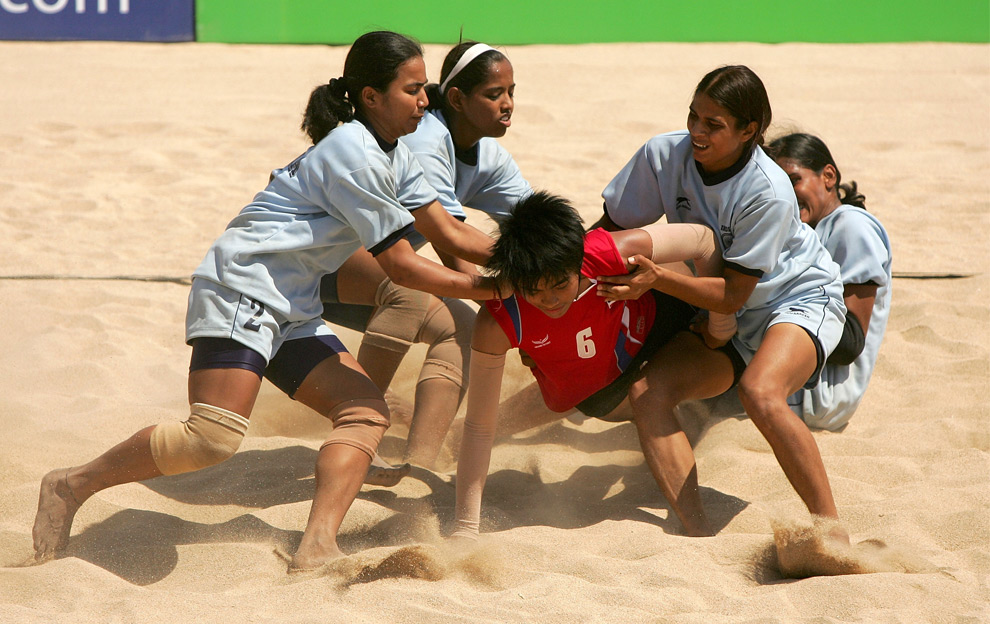
History Of Circle Kabaddi Games
Overview Of International Kabaddi Kabaddi (sometimes Kabbadi or Kabadi) is a contact sport that originated in Ancient India. The title Kabaddi is a generic term used to describe the following: The forms of mainstream Kabaddi: -International Kabaddi. -National Kabaddi recognised by the Amateur Kabadi Federation of India:National style (which resembles the Sanjeevani style), Circle style (the Punjab style), Indoor and national games, Beach Kabaddi and National professional league Kabaddi. -The three national styles recognised by the International Kabaddi Federation: Sanjeevani, Gaminee and Amar; -Punjab Circle style governed by the Amateur Circle Kabaddi Federation of India and -A number of similar contact sports which are peculiar to various regions such as hadudu in Bangladesh, baibalaa in Maldives, chedugudu in Andhra Pradesh, sadugudu in Tamil Nadu and Hututu in Maharashtra. It is the national game of Bangladesh,and Nepal and also the state game of the Indian states of Tamil Nadu, Maharashtra, Bihar, Andhra Pradesh, Telangana and Punjab. India is the most successful team in the world stage having won every world cup and Asian Games titles so far. Kabaddi initially became famous in Punjab Region as it was part of their per martial tradition, and is popular throughout South Asia, and has spread to Southeast Asia, Japan and Iran.
Game Rules RULES OF THE GROUND: 1 - Ground Ground shall be level, covered by standardized playing mat. 2 - Play Field Measurements Men 13 X 10 Meters MEN (Weight Limit) Below 85 Kg 3 - Play Field The play field means that portion of the ground, which measures 13 meter by 8 meter (ABCD) for Men before struggle. 4 - Sitting Block The sitting block shall be as positioned and provided by the league. 5 - Boundary The lines on the four sides of the play field are known as the boundaries (AB, BC, CD and DA). All lines shall be of 3 to 5 cm width and form the part of the play field. 6 - Lobbies The strips on both the sides of the playfield measuring one meter in width are known as the Lobbies. When the lobbies, as per rule 4 under ‘Rules of Play’ are included in the playfield, the boundaries of the play-field are extended up to the four lines, which enclose the play-field including the lobbies. Vahtovij metod rk trudovoj dogovor 2.

India was also instrumental in getting Kabaddi included in the main disciplines of the XI Asian Games held at Beijing, China in 1990. Kabaddi got recognized the national game of Bangladesh 1972. It is the state game of 7 Indian states. The sport is recognized in five forms in India, namely, Suranjeevii, Gaminee, Amar, Circle, Goongi.
7 - Mid Line The line that divides the play field into two halves is known as the mid-line. 8 - Court Each half of the play field divided by the mid line is known as the Court.  9 - Baulk Line Each of the lines in court parallel to the midline is known as baulk line.
9 - Baulk Line Each of the lines in court parallel to the midline is known as baulk line.
The distance of the baulk line from the mid line shall be 3.75 meter in case of Men. 10 - Bonus Line The line parallel to Baulk line towards end line is known as Bonus line. The distance between Bonus line and Baulk line shall be 1 meter.
Note: Raider is said to have crossed the Bonus line when he comes into contact with the ground between the End line and Bonus line. At the same time any part of his body should not have contact with the ground between the mid line and Bonus line. 11 - Cant The repeated, without break; at a stretch and clear aloud sounding of the approved word “KABADDI” within the course of one respiration shall be called ‘Cant’. 12 - Raider One who enters into the court of the opponent with the cant is known as a ‘RAIDER’.
The raider must begin his cant before he touches the opponent’s court. 13 - Anti or Anti-Raider Every player in whose court the raid is being made shall be called Anti or Anti Raider. 14 - Losing the cant To stop the repeated and clear aloud sounding of the word KABADDI’ or take in a breath during cant by the raider is known as losing the cant. A cant must be continued within one and the same respiration.